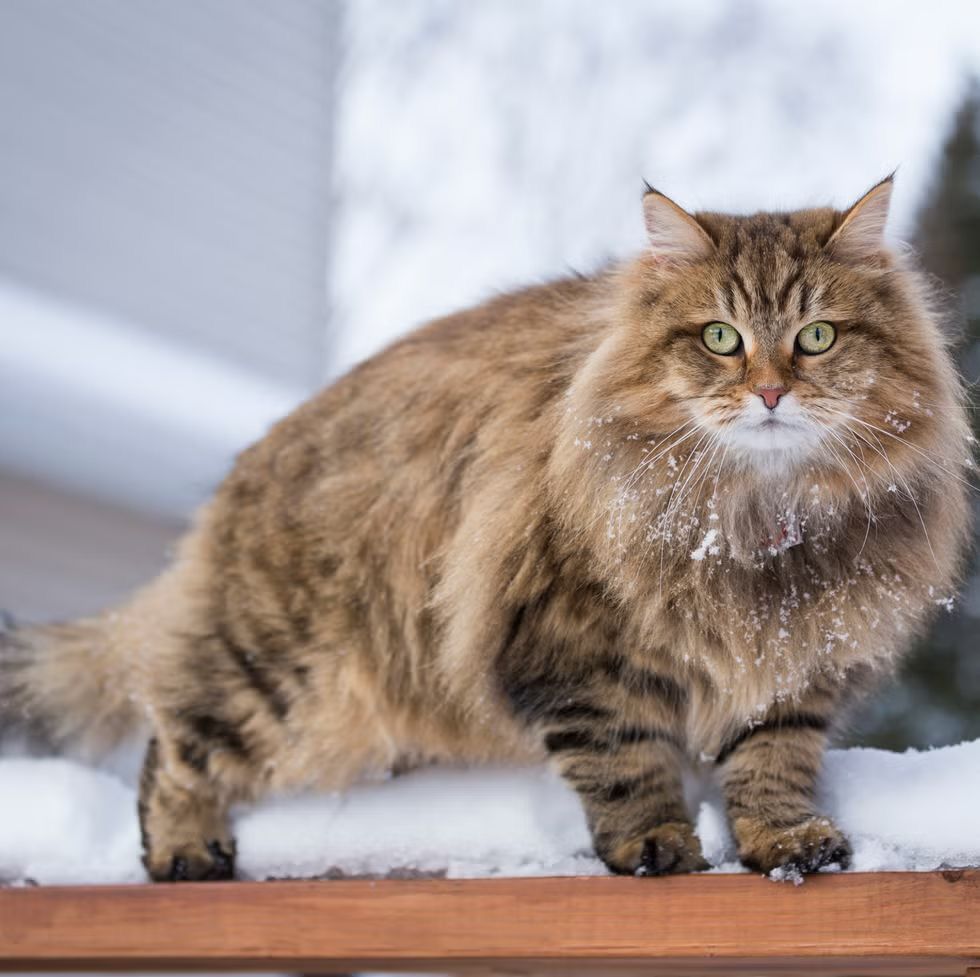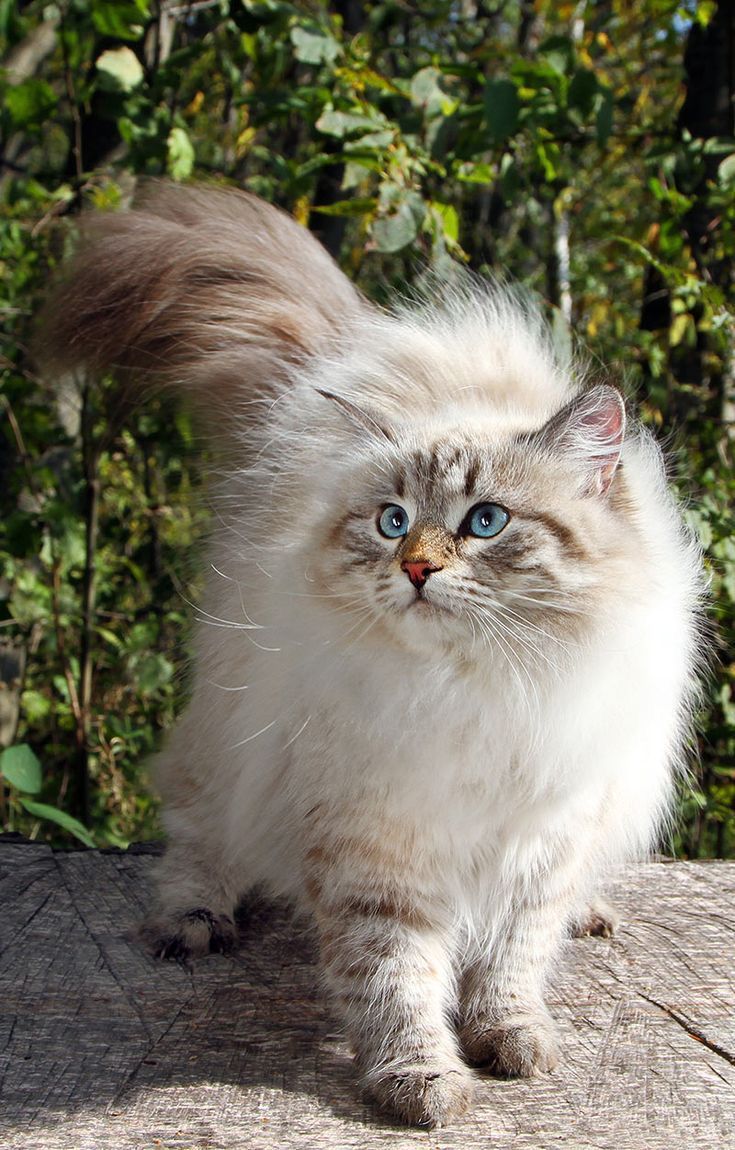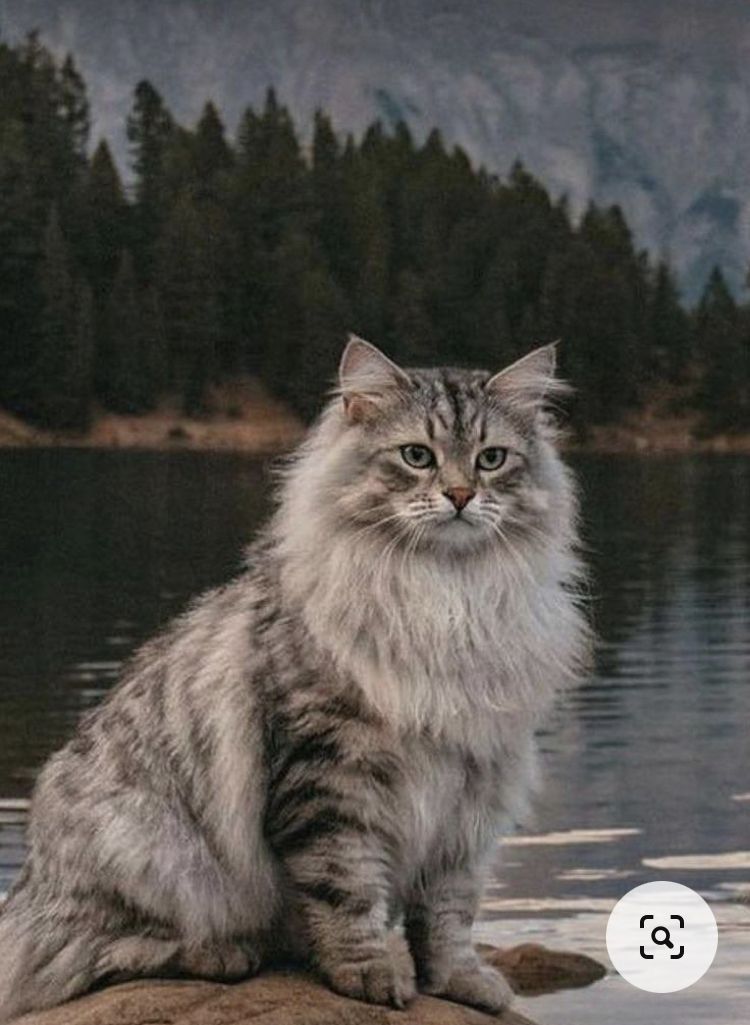Introduction
The Siberian cat is a majestic, medium-to-large breed known for its luxurious triple-layered coat, affectionate personality, and unique hypoallergenic qualities. Originating from the frosty forests of Siberia, these cats have evolved to become resilient, adaptable, and deeply loving companions. Whether you’re drawn to their enchanting appearance or their friendly temperament, the Siberian cat is truly a breed like no other.
Thank you for reading this post, don't forget to subscribe!Characteristics of Siberian Cats
1. Physical Appearance
Siberian cats are stunning creatures with a robust and athletic build.
- Size and Build: They are medium to large in size, with males weighing between 15–20 pounds and females weighing slightly less.
- Coat and Colors: Their dense, water-resistant triple-layer coat comes in a variety of colors, including tabby, solid, and bi-color patterns.
- Eye Shape and Colors: Siberians have large, almond-shaped eyes that range in colors like green, gold, blue, or even odd-eyed (two different colors).
2. Personality and Temperament
Siberian cat are known for their endearing personality that make them perfect partner.
- Affectionate and Loyal Nature: These cats form strong bonds with their humans and often follow them around the house.
- Playfulness and Intelligence: Siberians are highly playful and intelligent, making them quick learners and great for interactive games.
- Compatibility with Families: They are incredibly gentle and get along well with children, other cats, and even dogs.
3. Unique Traits
- Hypoallergenic Qualities: One of the standout features of Siberian cats is their lower production of Fel d 1, a protein linked to cat allergies. While no cat is 100% hypoallergenic, many allergy sufferers search Siberians more satisfactory.
- Adaptability to Different Environments: Siberians are equally comfortable in apartments and larger homes, thanks to their adaptable and easygoing nature.
Siberian cat Care and Maintenance
1. Grooming Needs “Pet Grooming Tools“
Despite their luxurious coats, Siberians are relatively low-maintenance.
- Coat Care and Brushing Tips: Their triple-layered coat resists tangles, but weekly brushing is recommended to keep it shiny and free from loose hair.
- Shedding Patterns: Siberians shed moderately year-round, with heavier shedding during seasonal changes.
2. Diet and Nutrition
Feeding a Siberian cat a well-balanced diet is crucial for their health and energy.
- Ideal Food for Siberian Cats: High-quality cat food with a balance of protein, fat, and carbohydrates is essential. Wet food can also be included for hydration.
- Dietary Supplements: Omega-3 fatty acids can help maintain a healthy coat and skin.
3. Exercise and Mental Stimulation
Siberians are active and agile cats that thrive on physical and mental challenges.
- Importance of Physical Activity: Provide ample opportunities for climbing, jumping, and running.
- Fun Games and Toys: Interactive toys, laser pointers, and puzzle feeders are excellent for keeping them entertained.
4. Health and Wellness
Siberians are generally healthy, but like all breeds, they can be prone to certain conditions.
- Common Health Issues: Hypertrophic cardiomyopathy (HCM) is a potential concern. Regular vet check-ups are vital to monitor their heart & complete health checkup.
- Regular Vet Check-Ups: Annual vet visits and vaccinations are essential to ensure a long and healthy life.
Why Choose a Siberian Cat?
- Perfect for Allergy Sufferers: Their hypoallergenic qualities make them a popular choice for individuals with mild allergies.
- Excellent Companions for Families: Siberians are loving, gentle, and great with kids and other pets.
- Stunning Appearance and Low Maintenance: Their gorgeous coat and minimal grooming needs make them both beautiful and practical pets.
Main Point:- Siberian cats are a perfect blend of beauty, intelligence, and affection. Whether you’re an experienced cat owner or looking to bring a furry friend into your life for the first time, Siberians are a joy to have around. With proper care, they can be dear partner for many years. If you’re ready for a playful, loyal, and hypoallergenic pet, a Siberian cat might be the perfect choice for you.

Siberian Cat care tips & grooming tips
Best Food Plan for Siberian Cats
Siberian cats are active, muscular, and naturally robust, requiring a well-balanced diet to maintain their health and energy. Providing proper nutrition is essential to support their growth, coat health, and overall well-being. Here’s a guide to the best food plan for your Siberian cat:
“Pet Diet Tips & Diet Chart For Winter & Summer Essentials“
1. High-Quality Protein
Siberian cats thrive on protein-rich diets, as they are obligate carnivores. Opt for high-quality wet or dry cat food with real meat, such as chicken, turkey, salmon, or lamb, listed as the primary ingredient. Wet food is especially beneficial for hydration.
2. Healthy Fats
Fats, particularly omega-3 and omega-6 fatty acids, are crucial for maintaining the Siberian cat’s thick, luxurious coat and skin health. Look for foods enriched with fish oil or flaxseed oil.
3. Limited Carbohydrates
Siberian cats don’t require a high-carb diet. Avoid foods with fillers like corn, soy, or wheat, as these can lead to weight gain and other health issues.
4. Balanced Vitamins and Minerals
Ensure their food contains essential vitamins like Vitamin A, B, and E, and minerals like calcium and taurine. Taurine is vital for heart and eye health.
5. Portion Control
Adult Siberian cats typically require 250–300 calories per day, depending on their activity level. Divide meals into two portions to maintain energy throughout the day.
6. Treats in Moderation
While Siberians love treats, choose healthy options like freeze-dried meats and keep them to no more than 10% of their daily caloric intake.
How to Identify an Original Siberian Cat Breed
Recognizing a purebred Siberian cat requires observing its physical traits, personality, and lineage. Here are some key signs to identify an original Siberian cat breed:
1. Distinctive Physical Traits
- Size and Build: Siberian cats are medium to large with a muscular, athletic build. Males typically weigh 15–20 pounds, while females range from 10–15 pounds.
- Triple Coat: They have a thick, water-resistant triple-layered coat. The texture is luxurious, with a dense undercoat and long, glossy guard hairs.
- Eye Shape and Color: Their round, expressive eyes are one of their standout features. Eye colors include green, gold, or blue.
2. Unique Ears and Tail
- Ears: Medium-sized ears with rounded tips and tufts of fur (ear furnishings) are characteristic.
- Tail: Their bushy tail is well-proportioned and thick, helping them adapt to cold climates.
3. Personality and Behavior
Siberians are affectionate, playful, and highly social. They enjoy climbing, exploring, and interacting with their families. Their intelligence and curiosity are notable traits.
4. Hypoallergenic Properties
A lower level of the Fel d 1 protein in their saliva makes them hypoallergenic compared to other breeds.
5. Pedigree Papers
Authentic breeders provide pedigree documents that trace the cat’s lineage. Verify these with reputable cat associations.
How Many Types of Siberian Cats
The Siberian cat is a single recognized breed with no officially defined subtypes. However, within the breed, there is significant diversity in terms of coat color, pattern, and appearance. These variations are sometimes informally categorized by enthusiasts, but all belong to the Siberian breed. Here’s an explanation of the types based on coat patterns and colors:
1. Coat Patterns
- Solid: These cats have a uniform coat color without any markings. Common solid colors include black, white, and blue (gray).
- Tabby: The most common pattern in Siberians. Tabby Siberians feature stripes, spots, or swirls, with a distinctive “M” shape on their foreheads. Variations include mackerel, classic, and spotted tabbies.
- Bi-Color: Bi-colored Siberians display a mix of white and another color, like black, gray, or orange.
- Pointed (Neva Masquerade): This variety has darker coloration on the ears, face, paws, and tail, similar to Siamese cats.
2. Coat Colors
Siberian cats come in a wide range of colors, including:
- Black
- White
- Blue (Gray)
- Red (Orange)
- Cream
- Silver
- Golden

Russian Siberian Cat Breeds
The Russian Siberian cat, also known simply as the Siberian cat, is a stunning breed native to the cold forests of Siberia. Known for its striking beauty, intelligence, and affectionate personality, this cat has become a favorite among pet lovers worldwide.
Physical Features
The Russian Siberian cat is medium to large in size, with a strong and athletic build. Its luxurious triple-layered coat is thick and water-resistant, helping it survive Siberia’s harsh winters. The coat comes in various colors and patterns, including tabby, solid, and bi-color. Their expressive, round eyes are typically green, gold, or blue, enhancing their captivating charm.
Personality
Siberians are friendly, playful, and highly social. They are known for their loyalty and often form powerfull relation with their familys. Their intelligence and curiosity make them quick learners, while their gentle demeanor ensures they get along well with children and other pets.
Care and Hypoallergenic Traits
Despite their thick coat, they require only moderate grooming, with weekly brushing sufficient to prevent matting. Impressively, Siberians produce lower levels of the allergenic protein Fel d 1, making them a suitable choice for allergy sufferers. “pet’s skin smooth and shiny Tips”
Disclaimer:- The suggestions given in this article are taken from veterinary doctors and pet experts. We may also make some mistakes in this article, so you must check it at your level once and if you find any mistake in the article, then you must tell us about it. “Best 5 Pets for Home & Kids”




